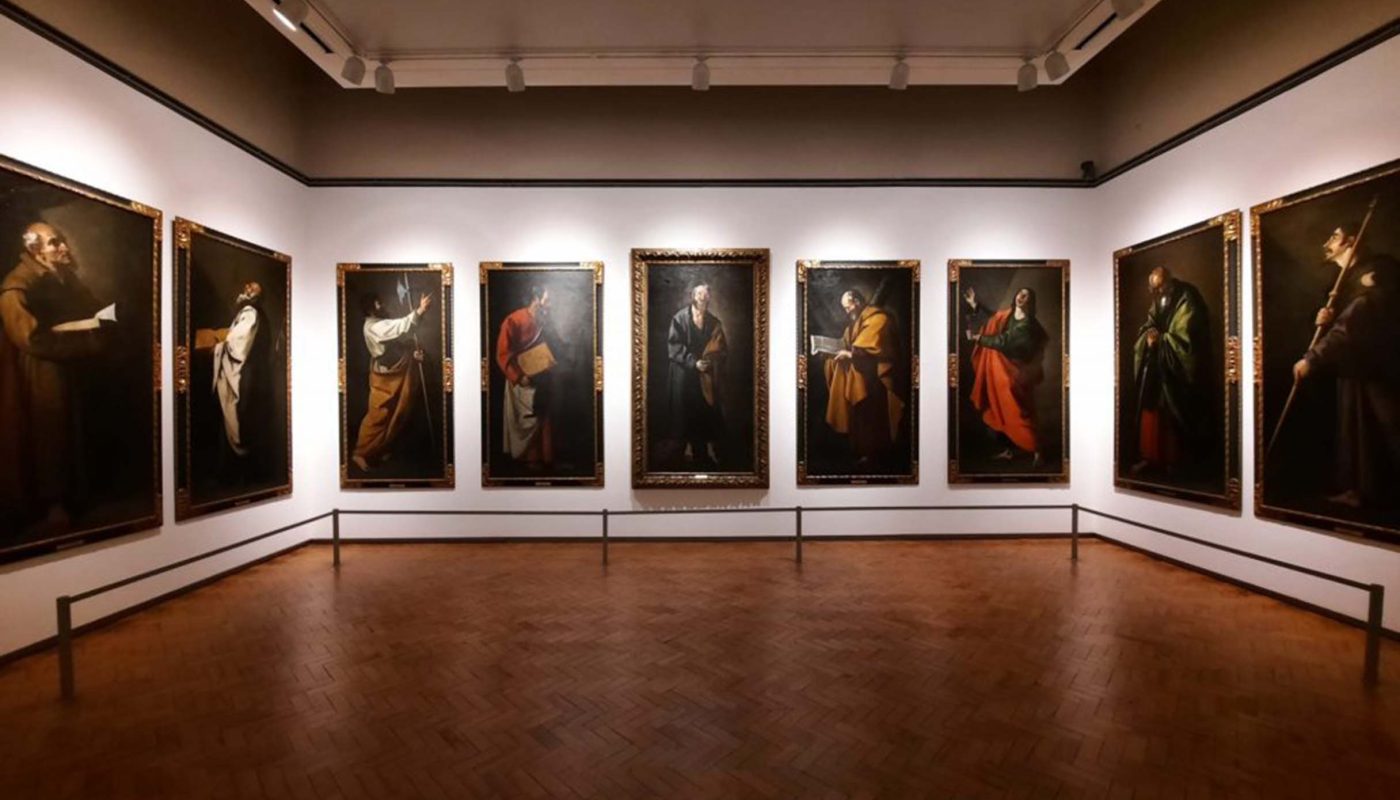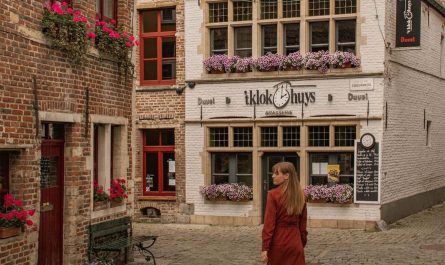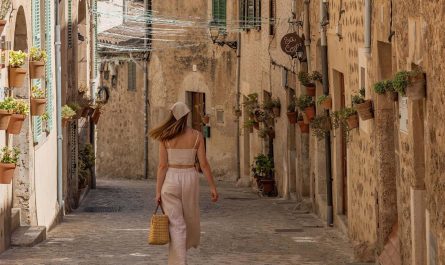Lisbon has always captivated me with its rich tapestry of history, culture, and artistic expression. The city’s art scene is a harmonious blend of traditional Portuguese heritage and contemporary innovation, offering a feast for the senses that is both diverse and inspiring. I will take you through four of Lisbon’s most esteemed art institutions, sharing personal experiences, insights into notable artworks, practical visitor information, and the nuances that make each venue unique.
Give Your Tech a Second Life
Give your devices a second life with Gazelle.com
Sell your old tech or buy certified pre-owned phones and laptops — saving money while reducing e-waste.
Smart for you. Good for the planet.
1. Museu Nacional de Arte Antiga (National Museum of Ancient Art)
Location: Rua das Janelas Verdes, 1249-017 Lisbon, Portugal
Overview:
Nestled in a 17th-century palace overlooking the Tagus River, the Museu Nacional de Arte Antiga is Portugal’s premier art museum, housing the nation’s most significant collection of Portuguese and European art from the Middle Ages to the early 19th century. The museum’s ambiance is imbued with a sense of historical grandeur, making it a sanctuary for art lovers seeking to immerse themselves in the rich cultural heritage of Portugal.
Personal Favorites:
- “Saint Vincent Panels” by Nuno Gonçalves
These enigmatic panels are among the most important works of Portuguese art. Depicting Saint Vincent, the patron saint of Lisbon, surrounded by various figures, the panels offer a fascinating glimpse into 15th-century Portuguese society. The intricate details and the portrayal of different social classes left me in awe of the artist’s skill and the historical narrative encapsulated within the artwork.
- “Temptation of St. Anthony” by Hieronymus Bosch
This triptych is a mesmerizing exploration of religious themes through fantastical imagery. Bosch’s imaginative creatures and surreal landscapes invite viewers into a complex, symbolic world that challenges and intrigues. Standing before this masterpiece, I was struck by the vividness of Bosch’s imagination and the painting’s intricate details.
- “Still Life with a Gilt Cup” by Willem Claesz Heda
This exquisite still life exemplifies the Dutch Golden Age’s attention to detail and mastery of light. The depiction of textures—from the gleaming silver cup to the half-peeled lemon—is so lifelike that it feels as though you could reach out and touch them. The painting’s serene composition offered me a moment of contemplation amidst the museum’s vast collection.
Recommended Artworks:
- “The Adoration of the Magi” by Domingos Sequeira
A masterpiece of Portuguese Romanticism, this painting captures the biblical scene with dramatic flair and intricate detail. Sequeira’s use of light and shadow adds depth and emotion to the composition, making it a must-see for visitors.
- “Portrait of Dona Catarina de Bragança” by Sir Peter Lely
This portrait of Catherine of Braganza, who became Queen of England as the wife of Charles II, offers insight into the historical ties between Portugal and England. Lely’s elegant portrayal reflects the grace and poise of the queen, making it a standout piece in the museum’s collection.
- “The Monstrance of Belém” by Gil Vicente
This ornate 16th-century silver-gilt monstrance is a stunning example of Portuguese metalwork. Its intricate design and craftsmanship highlight the country’s rich artistic heritage and are a testament to the skill of Portuguese artisans.
Visitor Information:
- Opening Hours: Tuesday to Sunday, 10:00 AM – 6:00 PM; closed on Mondays and public holidays.
- Admission Fees: General admission is €6, with discounts available for seniors, students, and groups. On the first Sunday of each month, admission is free for all visitors.
- Facilities: The museum offers guided tours, a gift shop, and a café with a terrace overlooking the river—a perfect spot to relax and reflect on the art.
Pros:
- Extensive and diverse collection of artworks.
- Beautiful historic building with river views.
- Informative displays providing historical context.
Cons:
- Some sections may be under renovation, limiting access to certain artworks.
- The museum’s vastness can be overwhelming; allocating sufficient time is recommended.
Getting There:
The museum is accessible via tram 15E or buses 714, 727, 728, and 732, stopping at Rua das Janelas Verdes. For those driving, limited paid parking is available nearby.
Booking and Discounts:
Tickets can be purchased at the museum entrance. Holders of the Lisboa Card enjoy free admission, and the card also offers unlimited travel on public transportation—a worthwhile investment for tourists.
2. Museu Coleção Berardo (Berardo Collection Museum)
Location: Praça do Império, 1449-003 Lisbon, Portugal
Overview:
Situated in the cultural hub of Belém, the Museu Coleção Berardo is Lisbon’s foremost museum dedicated to modern and contemporary art. The museum’s sleek, minimalist architecture provides a neutral backdrop that allows the vibrant artworks to take center stage. As I wandered through its halls, I was struck by the diversity of artistic expressions on display, reflecting the dynamic nature of 20th and 21st-century art.
Personal Favorites:
- “No Woman, No Cry” by Chris Ofili
This poignant piece features a Black woman shedding tears, each containing a tiny image of Stephen Lawrence, a victim of racial violence in the UK. Ofili’s use of mixed media, including elephant dung, adds layers of meaning and texture to the work. The emotional depth and social commentary resonated deeply with me.
- “Blue Monochrome” by Yves Klein
Yves Klein’s “Blue Monochrome” is a captivating masterpiece in its simplicity and depth. This piece is one of the artist’s most iconic works, where he explores the idea of creating a singular, immersive color experience. The use of his signature “International Klein Blue” (IKB) is an emotional and symbolic color, representing infinity, spirituality, and even the void. Standing before this piece, I was struck by the intensity of the color. There was something meditative about it—the way it envelops the viewer, making everything else seem distant and insignificant. It was almost as though the color had a life of its own, existing independently of the canvas. Klein’s genius is in his ability to evoke such powerful emotions from a single color. It’s a piece that invites reflection on the infinite and the boundless.

- “The Kiss” by Constantin Brâncuși
One of my absolute favorite sculptures in the museum is Brâncuși’s “The Kiss.” This timeless piece symbolizes the intimacy of human connection and love. The abstract form of two figures locked in a kiss, carved from a single block of marble, is both raw and elegant. The simplicity of the work enhances its emotional impact, and I could spend hours marveling at how Brâncuși captured such profound emotion in a smooth, unadorned shape. The work is a celebration of unity and love, an essence that transcends time and culture.
- “Untitled” by Donald Judd
Donald Judd’s minimalistic “Untitled” is a sculptural series of stainless-steel boxes stacked in an orderly fashion. The simplicity of the structure and the precision of the arrangement create a sense of harmony and calm, yet there’s an underlying tension in the rigidness of the forms. Judd’s work challenges the viewer to contemplate space, order, and perception in a way that feels almost scientific in its precision. I appreciated the subtlety of the work, as it invited me to engage with the structure and the space around it, rather than just the object itself. It was a perfect example of how modern art can provoke thought in such an understated way.
Recommended Artworks:
- “Campbell’s Soup Cans” by Andy Warhol
Warhol’s iconic Campbell’s Soup Cans are featured in the Berardo Collection Museum as part of a broader reflection on mass consumerism. This work is playful, yet satirical. It’s an exploration of how art can be both highbrow and accessible to the masses. Warhol’s commentary on modern society, particularly the rise of consumer culture, is something that struck me immediately when I saw the piece in person.
- “The Clock” by Christian Marclay
This innovative work is a 24-hour video montage that tells the time through scenes from movies and television shows. As the clocks tick in real-time, you see characters from various films glance at watches, or time be referenced in a myriad of ways. It’s both hypnotic and engaging, and I found myself returning to the piece throughout the day, fascinated by how Marclay has captured time in a truly cinematic way.
- “Mirror Room” by Yayoi Kusama
Yayoi Kusama’s “Mirror Room” is a mesmerizing installation where mirrors reflect an infinity of polka-dots, making the room feel infinite. The sensory overload and the feeling of being submerged in a different world made it one of the most immersive art experiences I’ve had in any museum. It left me with a sense of awe and wonder about the concept of space and how art can transform one’s perception of reality.
Visitor Information:
- Opening Hours: Monday to Friday, 10:00 AM – 6:00 PM; closed on Sundays and public holidays. The museum has extended hours on the first Friday of each month (until 10:00 PM).
- Admission Fees: General admission is €5, while students and seniors pay €3. Entry is free on Sundays after 2:00 PM.
- Facilities: The museum offers guided tours, audio guides, a café with light refreshments, and a museum shop with art books and prints.
Pros:
- Large and diverse collection of modern and contemporary art.
- Beautifully designed space that complements the artworks.
- The museum is located in Belém, a district rich in culture and history, so there’s plenty to see and do nearby.
Cons:
- The museum’s collection is extensive, so it can feel overwhelming at times.
- Some of the installations require patience and time to fully absorb their meaning.
Getting There:
The museum is located in the Belém district, which is easily accessible via tram (number 15E) from downtown Lisbon. Alternatively, you can take the train from Cais do Sodré station to Belém.
Booking and Discounts:
Tickets can be purchased online or at the museum entrance. It’s worth checking the museum’s website for any ongoing exhibitions or special events that might have different pricing.
3. Museu Calouste Gulbenkian
Location: Av. de Berna 45A, 1067-001 Lisbon, Portugal
Overview:
The Museu Calouste Gulbenkian is one of the most important museums in Lisbon, known for its impressive collection of art spanning from ancient Egyptian artifacts to European fine art. The museum’s layout is elegant, with various wings dedicated to different periods and styles. I’ve spent several hours at the Gulbenkian, and it never fails to amaze me how the collection balances artistic beauty with historical significance.
Personal Favorites:
- “The Dance” by Henri Matisse
This beautiful, dynamic piece captures the joy of movement and dance in a way that only Matisse can. The vibrant use of color and fluidity of the figures left me feeling energized and uplifted. The piece feels like a celebration of life itself, and every time I view it, I discover something new in its simplicity and emotion.
- “Self-Portrait” by Rembrandt
Rembrandt’s self-portraits are iconic, but this one, in particular, struck me deeply. The way he captures his own aging process, the weariness and wisdom reflected in his eyes, was a poignant reminder of the passage of time. It’s incredibly intimate and raw, offering a rare glimpse into the artist’s soul.
- “The Turkish Bath” by Jean-Auguste-Dominique Ingres
This stunning painting by Ingres exudes elegance and sensuality. The soft, curved bodies of the women in the scene are beautifully rendered, and the muted tones make the piece feel intimate. The contrast between the smoothness of the figures and the rough textures of the background creates a sense of depth and complexity.
Recommended Artworks:
- “The Tragic Actor” by Jacques-Louis David
This neoclassical painting is both dramatic and emotional. The subject, in the midst of his acting performance, is caught between the roles of tragedy and reality. It’s a deeply expressive work that explores the boundaries between artifice and truth.

- “Portrait of a Lady” by Élisabeth Louise Vigée Le Brun
This portrait captures the grace and poise of the subject with remarkable skill. The use of light and shadow creates depth and brings the figure to life in a way that is both realistic and idealized.
- “The Black Pharaoh” by Edmonia Lewis
This sculpture is an incredible example of 19th-century American art. The powerful figure of the Black Pharaoh stands as a testament to Lewis’ skill and the cultural importance of African heritage.
Visitor Information:
- Opening Hours: Tuesday to Sunday, 10:00 AM – 6:00 PM; closed on Mondays.
- Admission Fees: General admission is €10, with discounts available for students and seniors. Entry is free on the first Sunday of every month.
- Facilities: The museum has a café, gift shop, and offers audio guides for an enhanced visitor experience.
Pros:
- A rich and diverse collection of art spanning multiple cultures and periods.
- The peaceful, spacious layout makes it easy to enjoy the artwork without feeling rushed.
Cons:
- Some areas of the museum are more heavily focused on decorative arts than fine art, which might not appeal to all visitors.
Getting There:
The museum is easily accessible from central Lisbon via metro (Saldanha or Campo Pequeno stations) or bus.
Booking and Discounts:
Tickets can be purchased online or at the museum’s entrance. The Gulbenkian also offers discounts for groups and special exhibitions. You can check their website for up-to-date information on events.
Lisbon’s art scene is a rich blend of old and new, where ancient masterpieces coexist with groundbreaking contemporary art. From the meticulous historical displays at the Museu Nacional de Arte Antiga to the cutting-edge exhibitions at the Museu Coleção Berardo, and the intimate beauty of the Gulbenkian, there is something for every art lover to enjoy. My personal experiences at each museum have deepened my appreciation for not just the works themselves, but the cultural context in which they were created. Whether you are a history buff, a fan of contemporary art, or simply someone looking for a meaningful experience, Lisbon’s art scene is bound to inspire you in unexpected and delightful ways.
As I walked through each museum, I felt a deep connection to the art, and I encourage anyone visiting Lisbon to take the time to immerse themselves in this rich cultural landscape. With so many great museums to choose from, you’ll never run out of inspiration or beauty in this vibrant city.



